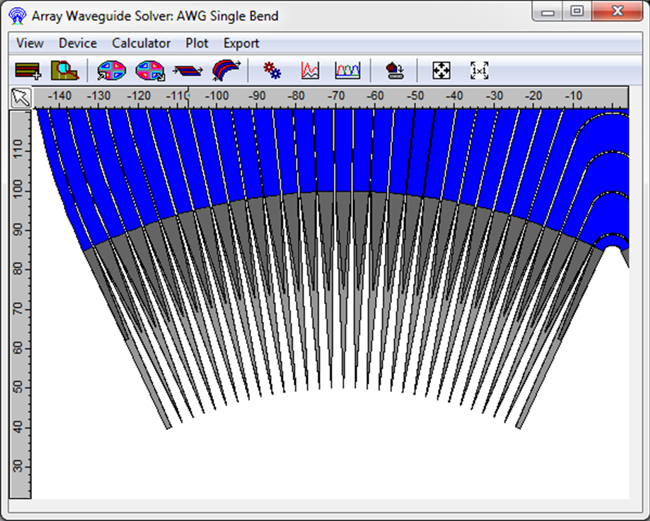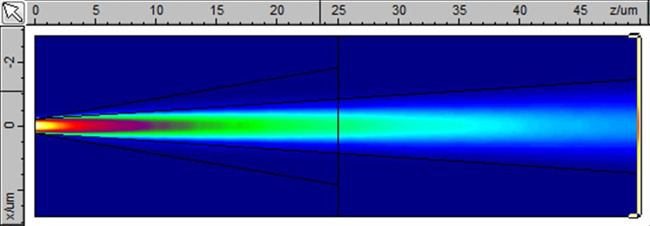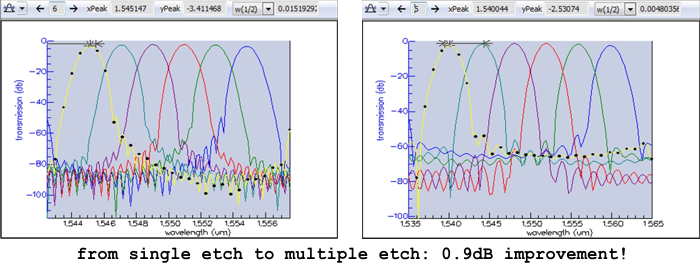EPIPPROPA WDM/DWDM model for AWGs and Echelle Gratings |
   |
Multiple Etch Depth TapersOptimise your deep etch to shallow etch transitionsIn Echelle and AWG designs there can be some loss due to reflection from the abrupt change in the materials at the interface between the waveguides and the slab in the start coupler. One possible way to avoid this is to use a shallower etch at this interface and thus reduce the contrast. Away from the star coupler a more confined deeper etch is preferred to reduce bend loses in bends. Epipprop provides you with the ability to define any combination of etches in the transition region and model them with its sister product FIMMPROP.
This additional step in the etch along the taper will broaden the modes at the start and end of the AWG, improving coupling into the array, and the shallow etch will also reduce the reflection. The result is that more light can be coupled and transferred through the waveguides than would be possible with just a single deep etch. In the case of this device, the addition of the extra etch step improved the insertion loss by around 0.9dB without effecting the channel shape. You can see the results in the images below: as a result of using a deep etch to shallow etch transition, an improvement of around 0.9 dB can be achieved across all channels compared with a single deep etch process!
|






